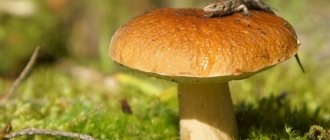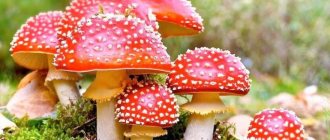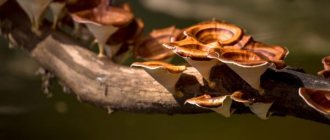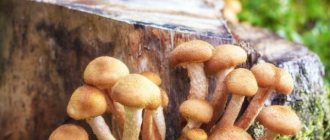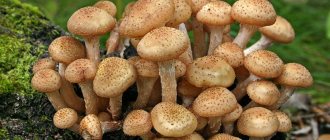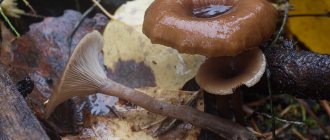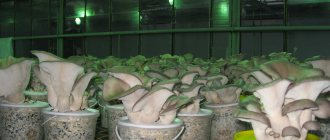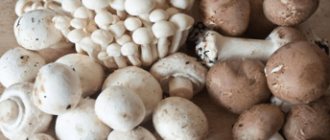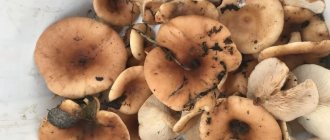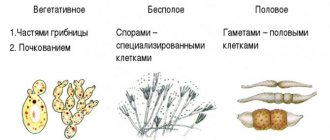What is a fungal cell
The mushroom kingdom has about 100 thousand species. These are unicellular and multicellular organisms that have a special status in the organic world and are neither animals nor plants. By type of nutrition they are heterotrophs. Such microorganisms require ready-made organic compounds for nutrition. Their similarity to animal organisms is due to the fact that they have urea in their metabolism, and the shell contains chitin, and glycogen as a reserve product (instead of starch, like in plants). But according to the method of absorption of food (adsorption), they can be classified as plants.
Fungi are considered decomposers that promote the rapid decomposition of organic matter, releasing nutrients back into the ecosystem. An individual feature of a fungal cell is a cell wall with a unique composition not found in any other type of cell.
Permanent cell structures
Fungal cell organelles are typical of eukaryotes. Their internal contents are represented by cytoplasm, which is a semi-liquid basis for the placement of various structures.
Centrioles, plastids and movement organelles cannot be found in fungal cells. The central position is occupied by the nucleus, in which hereditary information is stored. The functions of synthesis, storage and transportation of various organic substances are carried out by peroxisomes, the Golgi complex and the endoplasmic reticulum. The substance is also stored in a vacuole, in which the complex carbohydrate glycogen is deposited.
The energy role is played by mitochondria, on the membranes of which ATP molecules are formed. The musculoskeletal system of the fungal cell is formed by the cytoskeleton. The process of “assembly” of protein molecules also involves ribosomes, which are located on the surface of the granular ER. And vesicles containing hydrolytic enzymes take an active part in the breakdown of various substances. They are called lysosomes.
The structure of each type of organelle is closely related to the function performed, the combined action of which determines the coordinated operation of a complex cellular structure.
Fungal cell function
Depending on their habitat, mushrooms break down certain organic substances. The habitat of mushrooms depends on this. Depending on what microorganisms can break down, their location is determined. This place is called the substrate. Depending on the set of certain components of a particular substrate, each mushroom can choose an ideal environment for itself. Depending on the substrate the mushrooms choose, they can be saprophytes or parasites.
Saprophytes typically live in places where organic matter is already decomposing. They can be found in water, soil or animal remains.
Parasites are characterized by growth on plants and animals, feeding at their expense.
The first group includes cap and mold fungi and yeast. They are very important elements in natural cycles, because thanks to their action, organic organisms decompose into an inorganic state. They are involved in the transformation of chemicals.
And parasites carry dangerous diseases for their donors. Under their influence, dangerous diseases develop in plants, and a significant part of the harvest is lost.
Fungi can sometimes coexist with other organisms with mutual benefit. This phenomenon is called “symbiosis”. For example, some cap mushrooms interact well with trees. With the help of hyphae (thread-like processes), fungi can penetrate the roots of plants and obtain from them all the necessary beneficial ingredients. And for the plant, this becomes an additional opportunity to receive mineral components and moisture through the fungus, since the fungus has an accumulation function.
Introduction
Back in the middle of the 20th century. mushrooms were classified as part of the plant kingdom, and only in recent decades have mushrooms been considered as an independent kingdom of living organisms.
Mycology is the science of mushrooms. Mycology (from the Greek “mykes” - “mushroom” and “logos” - “concept”, “thought”) is a science that originally arose as a branch of botany.
Heinrich Anton de Bary (1831 – 1888) botanist and microbiologist, considered the founder of mycology. He created a classification of fungi close to the modern one and described the mechanisms of their reproduction. Bari proved that lichens consist of cells of fungi and algae.
About 120 thousand species of mushrooms are now known. Fungi are a kingdom of living nature that unites eukaryotic organisms that combine some of the characteristics of both plants and animals.
Fungal cell nutrition
The feeding process of mushrooms is quite complex. It plays an important role in the interaction of living organisms in the environment. There are no unnecessary elements in this cycle. In nature, each parasite plays its own important role. Mushrooms are found in almost any environment and represent a separate kingdom. Nutrition occurs in a heterotrophic manner. Their preferences can be quite varied.
Fungi use organic or mineral substances as food sources. The most favorable nutrient medium is considered to be the remains of vegetation, decay products of animal organisms, rotting roots or foliage. In the process of processing dead plants, mushrooms are an important link, since its function includes influencing the cellulose layers of the shell.
Their nutrition is characterized by the following nuances:
– they are unable to digest large foods;
– digestion is considered external;
– carbon is used as the main source of energy;
– the main method of food absorption is suction.
Cells living in forest areas cannot process large foods. The external type of digestion is a feature of mushrooms. Their body secretes enzymes that accelerate the breakdown of complex organic compounds. In this case, carbon is released. It is involved in the formation of energy and in the construction of cells. The main part of sugar is part of microorganisms that feed on the entire surface of the body. Fungal cells are able to absorb all useful substances that are in the environment. Thanks to this, the formation of a top fertile layer of soil occurs.
Beneficial properties of microscopic fungi
Man has learned to use these microorganisms to produce food products, medicines, and enzymes. For example, the formation of kefir by kefir fungi, fluffy bread by yeast, cheese by special types of mold fungi.
Many varieties of microscopic fungi (for example, penicillium or aspergillus) during their life processes synthesize antibiotics, which humans use to produce medicines.
Rice. 9. Blue cheese.
Fungal cell growth and reproduction
Another feature of fungal cells is its reproduction. They are able to do this in several ways. The same type of mushroom can reproduce in several ways at the same time: vegetatively, sexually or asexually. The first, vegetative, method occurs without the participation of one specific organ. In this case, any part of the mycelium can initiate the growth of a new organism. To carry out vegetative cell propagation, it is necessary to arrange an appropriate nutrient medium. For asexual and sexual reproduction, they form spores, thanks to which the process occurs.
A distinctive feature of asexual reproduction is due to the appearance of spores on the hyphae of aerial mycelium.
Fungal cell nucleus
Fungal cells have a small nucleus with a double membrane. The shape resembles an elongated oval. It is located in the center of the cell, as well as at the septum or near the shell. Hyphal cells are characterized by the presence of one nucleus. In rare cases, it may be absent altogether. The main function assigned to the nucleus is the transfer of genetic information to the cytoplasmic membrane through RNA and the creation of daughter cells based on DNA.
What makes the nuclear apparatus of fungal cells special is the presence of dikaryons and double nuclei, which are obtained as a result of the fusion of the cytoplasm. Another feature of nuclei is the ability to move from one cell to another.
The process of ontogenesis also has its own characteristics. Mostly in mushrooms it occurs in a closed form. In this case, the nuclear envelope without centrioles is not disrupted.
Partitions between cells are not always formed immediately after nuclear division. In such cases, multinucleate cells are obtained.
The absence of plant starch in the cytoplasm of the nucleus is another feature of fungal cells. Instead, glycogen is distributed in the cytoplasm as the main storage substance of the cell.
conclusions
From the review given here of the main typical components of a fungal cell, one can see that fungi represent a very unique group of organisms; they are exclusively heterotrophic, which puts them in a very special position in comparison with the classical representatives of the plant world and brings them closer together in a wide range of characteristics of their direction and products metabolism with animals. In addition to other compounds, a special place in fungi is occupied by styrene, the synthesis of which at the first stage proceeds similarly to animals, i.e., along the path of cholesterol formation. However, later in fungi it is reduced mainly to the synthesis of ergosterol.
Six points confirming the special position of mushrooms:
- Fungi are characterized by a stronger development of agranular endoplasmic reticulum than animals and plants;
- they lack the connection between cytokinesis (i.e., cell division) and nuclear division, which is characteristic of plants and animals;
- the typical Golgi apparatus, characteristic of other eukaryotes, is absent in them or is represented mainly by separate cisternae;
- higher marsupial fungi are characterized by a closed type of mitosis with preservation of the nucleolus to the end;
- fungi are characterized by apical cell growth, while animal cells grow isodiametrically, and in multicellular plants by their extension;
- instead of centrioles characteristic of animals and absent in plants, fungi during the process of karyokinesis have organized special polymer bodies in a more simplified manner than in animals; Also close to animals is the process of cytokinesis observed in fungi by furrowing, in which the participation of microtubules known for algae is absent.
The position of mushrooms in the system of the organic world turns out to be extremely isolated, including from the point of view of biochemistry, which justifies their separation into a special, fourth kingdom of nature.
Video
Fungal cell wall
The fungal cell wall is a working organelle with the following functions:
- Determination of cell shape.
- Stabilization of internal osmotic pressure.
- Protection from physical impact.
- Barrier function for protein components.
The cell wall consists of a structural component and an extracellular matrix.
The wall structure is a three-dimensional network that includes polysaccharides, glycoproteins and proteins. Typical walls are characterized by the presence of strong fibrillar polysaccharides embedded in a gel-like matrix. It consists of glycoproteins and proteins with various minor components (lipids, pigments and inorganic ions and salts).
Cellulose in a mushroom cell
Cellulose is the main building material. It forms the cell walls of plants.
Cellulose in the cell wall is mostly found in mushrooms where chitin is not present. The only exceptions can be considered mushrooms of the genus “Rhizidiomyces”, which simultaneously contain two components. Cellulose is found in oomycete fungi of the order Acrasiales, Lagenidiales, Saprolegniales, Leptomitales, Peronosporales (Aronson, 1965).
Cellulose is found in those groups of fungi that live in an aquatic environment with biflagellate zoospores.
Similarities between fungal and plant cells
Previously, mushrooms were mistakenly classified as lower plants. But after careful consideration, scientists decided to separate them into a separate kingdom. Misconceptions were made earlier due to a certain similarity between mushrooms and plants.
The similarities are that mushrooms, like plants, do not have a digestive system. They absorb all nutrients at the cellular level.
Another important similarity between mushrooms and plants is reproduction. It can be asexual, sexual and vegetative. Some plants produce seeds, and fungi produce spores. For example, ferns also produce spores, but they are classified as plants.
The main similarities between mushrooms and plants:
– unlimited growth;
– reproduction using spores;
– cell walls and vacuoles;
– monotonous lifestyle;
- nutrition by absorption.
Difference between fungal cells and plant cells
The most important difference between mushrooms and plants is the fact that they are able to live in places where there is practically no oxygen. They are also distinguished by their way of eating. Due to the lack of chlorophyll, mushrooms are not capable of photosynthesis. Therefore, nutrition can only occur in a heterotrophic manner. Mushrooms feed by breaking down glucose, and plants get energy from carbon dioxide.
Metabolism in mushrooms occurs thanks to lecithin and glycogen, while in plants they are simply absent.
The poison, which is contained in some types of mushrooms, is very similar in chemical composition to snake venom, but has nothing in common with plant poisons. Thus, fungi have more characteristics in common with animals than with plants.
Shell
The shell of young individuals can be characterized as thin, colorless and uniform in structure. It thickens as it matures, becomes slimy and acquires darker shades due to the deposition of pigment. The outer layer is usually impregnated with a small amount of wax and fat.
Fungi are eukaryotes. This means that their cells contain a nucleus, separated and equipped with membranes. Different systematic groups have different numbers of nuclei. The shape of the nucleus can be described as round, oval or fusiform. They can change it.

